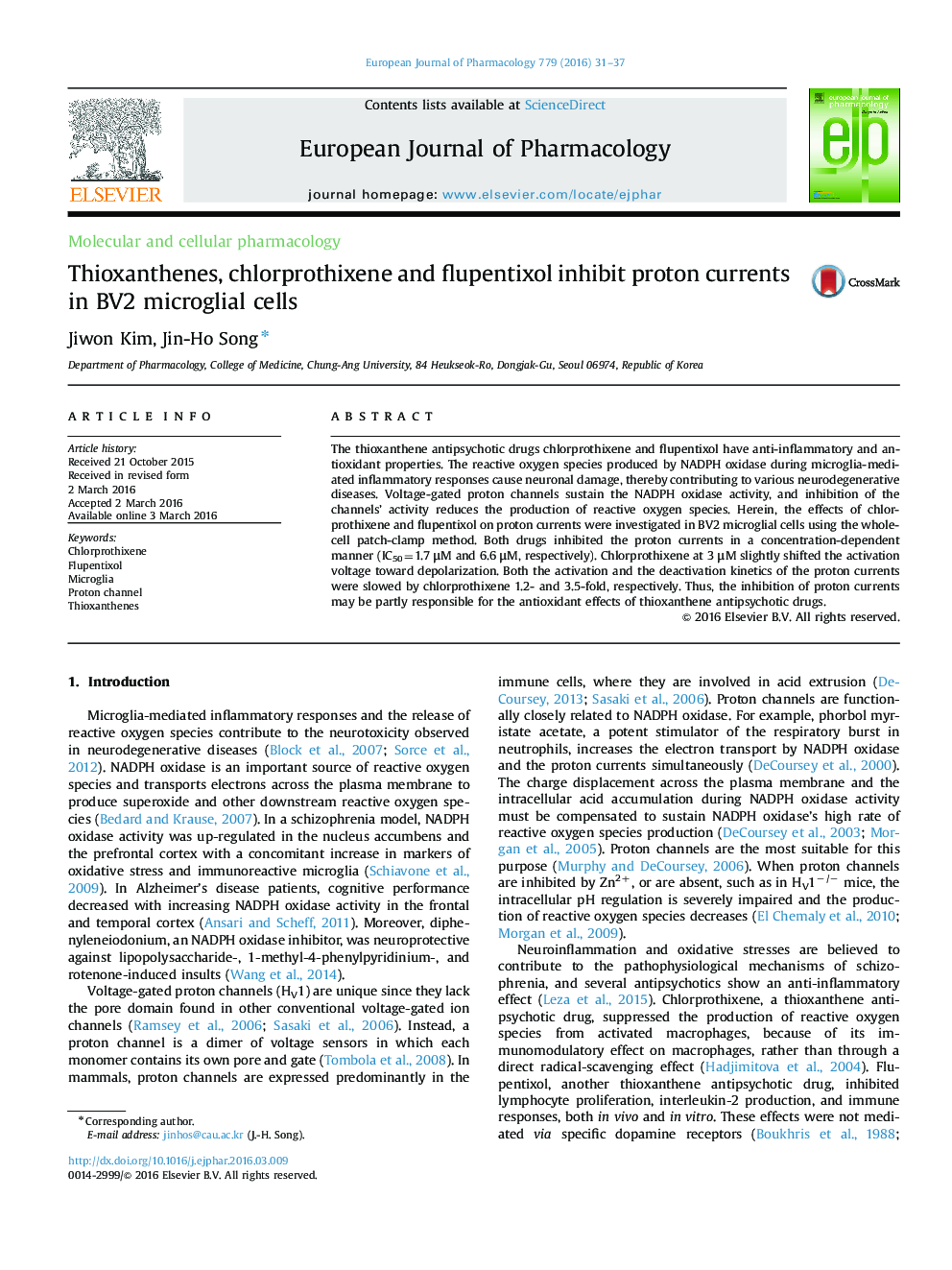| Article ID | Journal | Published Year | Pages | File Type |
|---|---|---|---|---|
| 5826773 | European Journal of Pharmacology | 2016 | 7 Pages |
Abstract
The thioxanthene antipsychotic drugs chlorprothixene and flupentixol have anti-inflammatory and antioxidant properties. The reactive oxygen species produced by NADPH oxidase during microglia-mediated inflammatory responses cause neuronal damage, thereby contributing to various neurodegenerative diseases. Voltage-gated proton channels sustain the NADPH oxidase activity, and inhibition of the channels' activity reduces the production of reactive oxygen species. Herein, the effects of chlorprothixene and flupentixol on proton currents were investigated in BV2 microglial cells using the whole-cell patch-clamp method. Both drugs inhibited the proton currents in a concentration-dependent manner (IC50=1.7 μM and 6.6 μM, respectively). Chlorprothixene at 3 μM slightly shifted the activation voltage toward depolarization. Both the activation and the deactivation kinetics of the proton currents were slowed by chlorprothixene 1.2- and 3.5-fold, respectively. Thus, the inhibition of proton currents may be partly responsible for the antioxidant effects of thioxanthene antipsychotic drugs.
Related Topics
Life Sciences
Neuroscience
Cellular and Molecular Neuroscience
Authors
Jiwon Kim, Jin-Ho Song,
